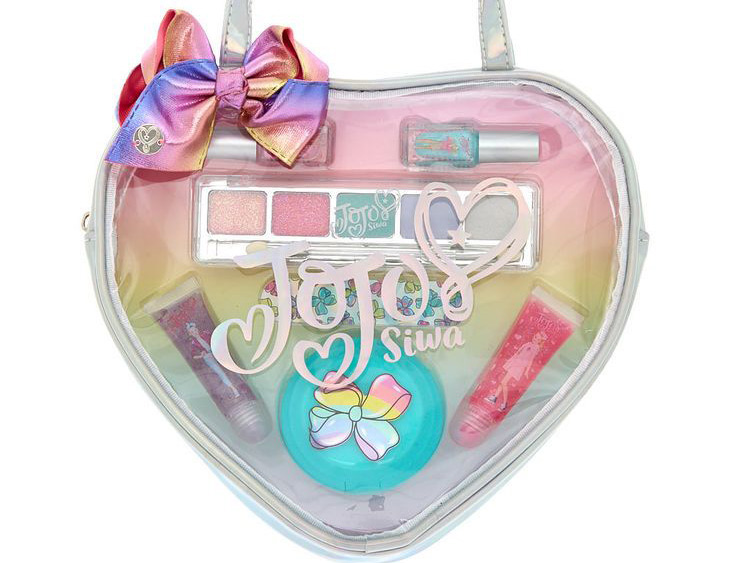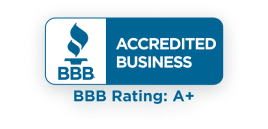Asbestos in Makeup
Talc and asbestos form close together in the earth, so mined talc can sometimes contain asbestos. Some cosmetics still list talc as an ingredient. A 2023 study from the U.S. PIRG Education Fund found asbestos in makeup with talc sold online and in popular stores.

How Asbestos Ends Up in Makeup
Asbestos ends up in makeup when it contaminates talc, a soft mineral used in many powders, blushes and eyeshadows. These two minerals form close together in the ground, so asbestos often mixes with talc during mining. While using these products, people can breathe in microscopic asbestos fibers, which can cause asbestos-related diseases like mesothelioma cancer.
Removing asbestos from talc isn’t simple. Because they form side by side, even careful mining can leave behind small amounts of asbestos. Tests may miss trace levels, and “asbestos-free” labels don’t always mean the product is truly safe. When people use talc-based makeup near the mouth, nose or eyes, they risk inhaling fibers they can’t see or feel.
It wasn’t until 2024 that the U.S. Food and Drug Administration proposed a rule requiring standardized tests for asbestos in products containing talc. The rule hasn’t taken effect yet, but it could lead to stronger safety rules for personal care items. This could help reduce the public’s risk of developing mesothelioma from contaminated makeup.
Why Is Talc in Makeup?
Talc is common in makeup because it’s soft, smooth and helps products go on evenly. As the softest mineral on Earth, it absorbs oil, creates a matte finish and helps makeup stay in place. It also works as a filler that spreads pigment evenly, making it easier to blend powders, blushes, eyeshadows and foundations.
Brands like Revlon and Lush still use talc in some products, claiming their supply sources are asbestos-free. Some brands, including Chanel and L’Oréal, have started removing talc from certain product lines. In early 2024, Dynarex recalled baby powder over possible asbestos as Johnson & Johnson did in 2019. Facing mounting lawsuits over talcum powder and public pressure, J&J switched to a cornstarch base in 2023.
Also in 2023, the FDA tested 50 talc-based cosmetics from various brands. Products were selected based on popularity, pricing and marketing. No asbestos was found, but the tests didn’t cover every product or focus on specific companies like Dynarex or J&J. The results offer a limited snapshot. Proposed federal rules may lead to more reliable testing and better safety standards for consumers.

“After reading the guide, I felt more confident about what was ahead.” – Carla F., mesothelioma survivor
Get Your Free GuideWhat Makeup Has Asbestos-Contaminated Talc?
Most makeup products that tested positive for asbestos were powder-based, such as blush, face powder and eyeshadow. When powder products are applied, they can release asbestos fibers into the air, increasing the risk of exposure. Inhaling or swallowing asbestos from contaminated products can lead to serious asbestos-related diseases such as mesothelioma and lung cancer.
Makeup That Tested Positive for Asbestos
Even a small amount of asbestos in makeup can be dangerous. While only certain products have tested positive, any item made with talc could carry the same risk unless properly tested. Until stronger rules are in place, choosing talc-free makeup helps lower the chances of exposure.
Asbestos in Children’s Makeup
Children’s products that have tested positive for asbestos include eyeshadow palettes, blush kits and glitter compacts made with talc. These items were sold online and in major retail stores and often featured kid-friendly packaging. Because powder-based makeup can release asbestos fibers into the air, kids may breathe in or swallow those fibers. This can cause diseases like mesothelioma later in life.
Independent labs and the FDA found asbestos in several popular makeup kits for children. Some were recalled, but others stayed on the market or appeared again with different names or packaging.
Children’s Makeup That Tested Positive for Asbestos
The U.S. doesn’t require safety testing for asbestos in children’s cosmetics. Brands that use talc do not have to show it is asbestos-free. That means more unsafe products could still be on shelves today.
To reduce risk, parents can avoid talc-based makeup and pick talc-free options instead. Even small exposures in childhood can lead to serious illness decades later.
Why Is Asbestos in Cosmetics Dangerous?
Asbestos fibers in cosmetics can become lodged in tissue in the body when inhaled. These fibers cause irritation and inflammation over decades. This can damage DNA in nearby cells and lead to cancer, including mesothelioma. This aggressive cancer forms in the lining around organs called the mesothelium. Asbestos exposure is its primary cause.
Mesothelioma can take 20 to 60 years to develop after exposure. Other diseases linked to asbestos include lung cancer, ovarian cancer and asbestosis. These illnesses often appear late and respond poorly to treatment.
In July 2024, the World Health Organization confirmed that talc containing asbestos causes cancer in humans. That same month, researchers found asbestos fibers in cosmetic talc samples sold to consumers. A separate National Institute of Health study linked regular genital talc use to higher rates of ovarian cancer. While that study focused on personal care products, it adds to evidence that long-term use of talc may increase cancer risk.
Tips for Avoiding Asbestos in Makeup
You can’t see or smell asbestos in makeup, but you can take steps to lower the risk. Talc is the main source of contamination, so avoiding it is one of the best ways to protect yourself.
Top 4 Tips for Avoiding Asbestos-Contaminated Makeup
- Avoid brands with past contamination. Some products from Claire’s, Justice, City Color and other brands have tested positive for asbestos. If a company has had problems before, its other products may still carry the same risk.
- Choose talc-free makeup. Asbestos can contaminate talc during mining. Look for powders, blushes and eyeshadows labeled as “talc-free.” Using these products reduces the chance of exposure.
- Check the ingredient list. Asbestos won’t appear on labels, but talc will. Avoid talc-based products unless the brand offers independent, batch-level testing to confirm the talc is asbestos-free.
- Replace talc-based products when unsure. The only way to confirm if a product contains asbestos is with lab testing. If that isn’t possible, switching to a talc-free option is a safer and more practical choice.
There is no federal rule, yet, that requires asbestos testing in cosmetics, so it’s up to consumers to take precautions. Knowing which ingredients to watch for and which brands have faced recalls can help reduce your risk.
Asbestos‑Free Makeup Brands
If you’re switching to talc-free products, Pacifica and Honest Beauty are among the most popular brands offering transparent, asbestos-free options.
Talc-Free Makeup Brands
- Araza
- Baked by Melissa
- Beauty Bakerie (select products)
- Honest Beauty
- Ilia
- Jane Iredale
- Juice Beauty
- Korres
- Pacifica
- RMS Beauty
Some brands now completely avoid talc or selectively offer talc-free versions of their products, lowering the chance of asbestos contamination. For example, Lush and Milani both still have products with talc, but Lush offers select talc-free powder options and Milani offers select products without talc. Opting for talc-free makeup significantly reduces your risk.

Over $30 billion has been set aside to support those diagnosed with mesothelioma. We’ll help you explore your options and introduce you to the nation’s leading mesothelioma law firms.
Get Help NowWhat to Do if You Used Contaminated Makeup
If you used makeup that may have contained asbestos-contaminated talc, tell your doctor. Share which products you used and how long you used them. Even if you don’t have symptoms, early documentation can help track long-term health risks. Diseases like mesothelioma, lung cancer and asbestosis can take decades to appear.
You may also want to speak with a mesothelioma lawyer if you develop an asbestos-related illness or show asbestos-related symptoms. People diagnosed with mesothelioma after using talc products may qualify for compensation. A lawyer who handles asbestos cases can explain your options and help gather the records needed to file a claim.
Common Questions About Asbestos in Makeup
- What does asbestos-free actually mean?
-
In the U.S., a product can legally be labeled “asbestos-free” even if it contains up to 1% asbestos. This means small amounts, with possibly hundreds or thousands of asbestos fibers, can still be found in consumer goods, including makeup. While this might sound small, even low-level asbestos exposure can be dangerous over time.
Asbestos in cosmetics falls into a regulatory gray area. There’s currently no federal law that requires manufacturers to ensure talc is asbestos-free. The FDA can only act if there’s clear scientific proof that a product is harmful during normal use. This is difficult to show because asbestos-related diseases take a long time to develop, known as a long latency period.
- How do experts test for asbestos in makeup?
-
Accurate asbestos testing requires highly sensitive equipment. Experts like Sean Fitzgerald from the Scientific Analytical Institute use transmission electron microscopy (TEM), which can detect asbestos fibers much better than standard methods like polarized light microscopy (PLM) or X-ray diffraction (XRD). Fitzgerald says that using less sensitive tools can lead to false negatives. This means contaminated products might go undetected.
- Is talc-free makeup guaranteed to be asbestos-free?
-
Not necessarily. Choosing talc-free makeup lowers the risk of asbestos exposure. But contamination can still happen. This can happen if products are made close to asbestos or if they have ingredients from contaminated sources. Some advocacy groups suggest looking for brands that offer independent lab testing. This testing confirms their products are free from asbestos.



